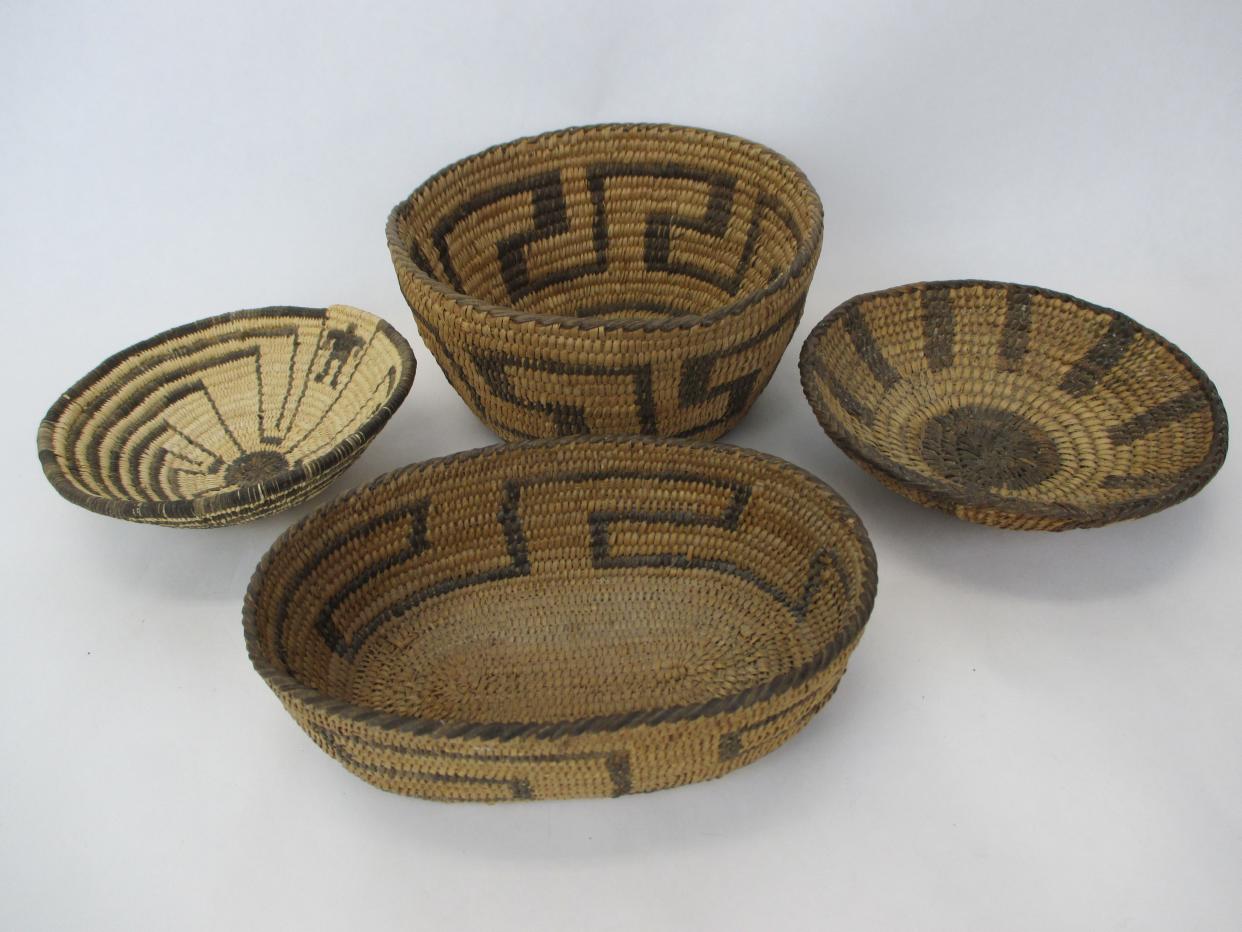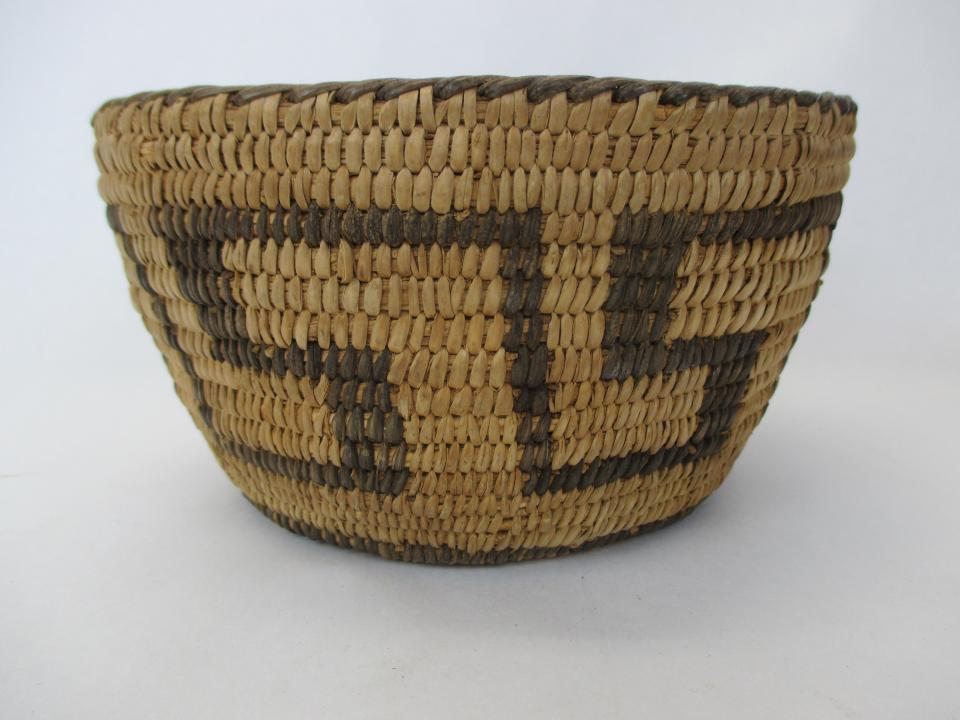Antiques: The rise and fall of basket weaving in Pima culture

The other day a regular customer of ours who favors outlandish costumes came in and admired a Native American war shirt newly on display. Not long ago, he would have bought it without a second thought. This time, however, he muttered something about "cultural appropriation" and moved on.
Having somehow never heard of cultural appropriation, I was a bit flummoxed. Can we no longer tip our hat to regional or historic fashion? Does that mean I now have to throw away all my Hawaiian shirts? I'm still chewing on that idea but in the meantime this column pays homage to a non-wearable icon of southwestern history: the Pima basket.
The Pima is a community of Native Americans that lived (and still live) just east of us in southern Arizona. Descended from the earlier Hohokum tribe, they were river dwellers and able to utilize their proximity to the then-flowing Salt and Gila rivers in order to farm.
In years of drought, the Pima survived as traditional hunters/gatherers, harvesting the jackrabbits and mesquite beans that were abundant in their desert climate. During the Gold Rush years of 1849-51, the tribe aided Western settlers by providing food and guidance through hostile territory.
Nonetheless, the latter half of the 19th century proved nearly ruinous for the Pima, and during the 1920s, famine took a heavy toll. New initiatives and federal aid helped them recover, and today the tribe operates a number of successful enterprises on more than 500,000 acres of land.
Among the many crafts practiced by the Pima, perhaps the most famous is the weaving of baskets. Despite the tribe's financial duress following the Civil War, basket making never ceased, and by 1900, it was an ingrained part of life in almost every home.

Initially baskets were made strictly for personal use and in a wide variety of shapes and styles. It wasn't long before the beauty and workmanship inherent in such artifacts came to the attention of white admirers, and wagon jobbers began paying for baskets in order to meet growing demand.
All the same, the prices paid were low and weavers soon recognized that more money could be made in the fields than catering to the whims of collectors. By the end of the 1920s, basket weaving among the Pima had all but disappeared, ultimately replaced by modern pots, pans, and more lucrative pursuits.
As to the baskets themselves, they were laboriously made from thin strips of woods and grasses. Willow generally makes up the majority of a Pima basket, and is responsible for its overall caramel color, while the darker tones of Devils Claw fibers (a desert fruiting plant) provide the design.
Although Pima baskets are superficially similar to those made by Apache weavers, the former utilize a thinner, grass-like construction, while the latter were made using broader, rod-like strands. Apache baskets are also often more figurative, while those from the Pima tend to be more geometric. It takes some practice to interpret the stylized imagery, but every basket tells a story.
With regard to value, Apache baskets were made in far fewer numbers and thus generally more valuable than those of Pima origin. In either case, pricing depends on size, condition, quality and design. Even small baskets will likely require most of a hundred dollar bill to acquire, while larger and more elaborate examples can run into the thousands.
Very few, if any, original baskets were ever signed, so the family origins of most have been lost to history. Still, an original Pima basket is a classic handmade example of the great American Southwest. They have utility, workmanship and beauty going for them, and the only thing you'll be guilty of is cultural appreciation.
Mike Rivkin and his wife, Linda, are longtime residents of Rancho Mirage. For many years, he was an award-winning catalogue publisher and has authored seven books, along with countless articles. Now, he's the owner of Antique Galleries of Palm Springs. His antiques column appears Sundays in The Desert Sun. Want to send Mike a question about antiques? Drop him a line at info@silverfishpress.com.
This article originally appeared on Palm Springs Desert Sun: Antiques: The rise and fall of basket weaving in Pima culture

